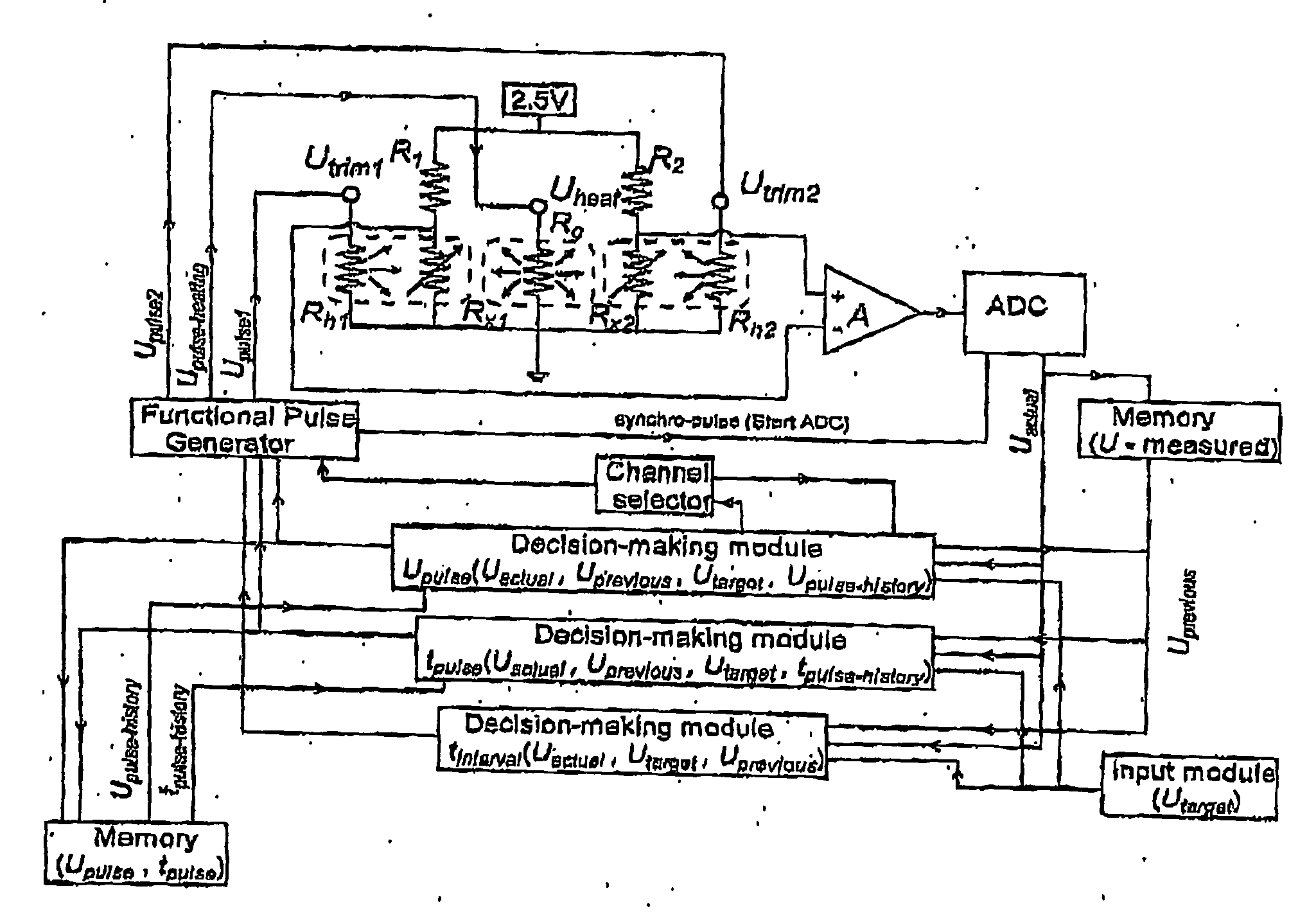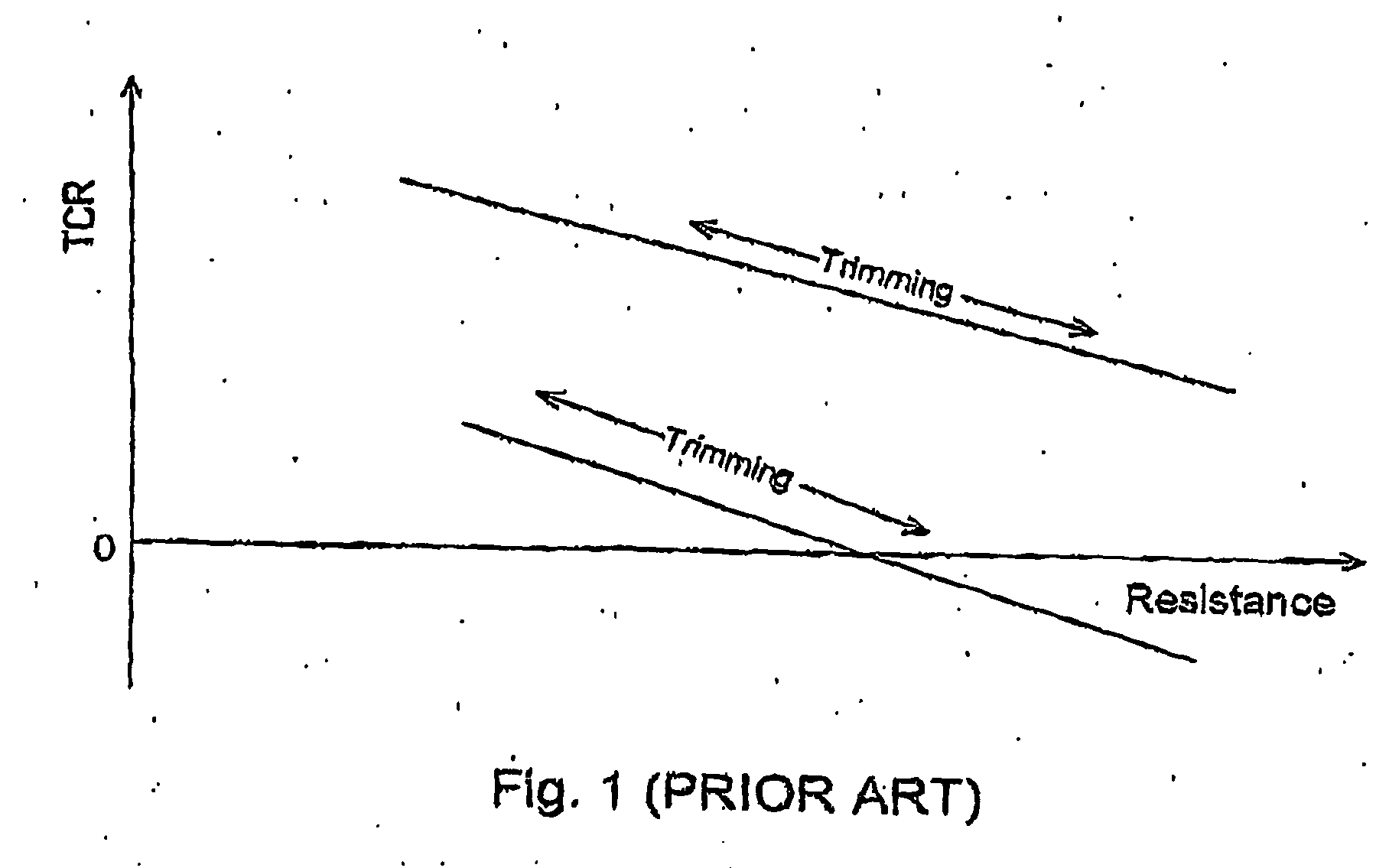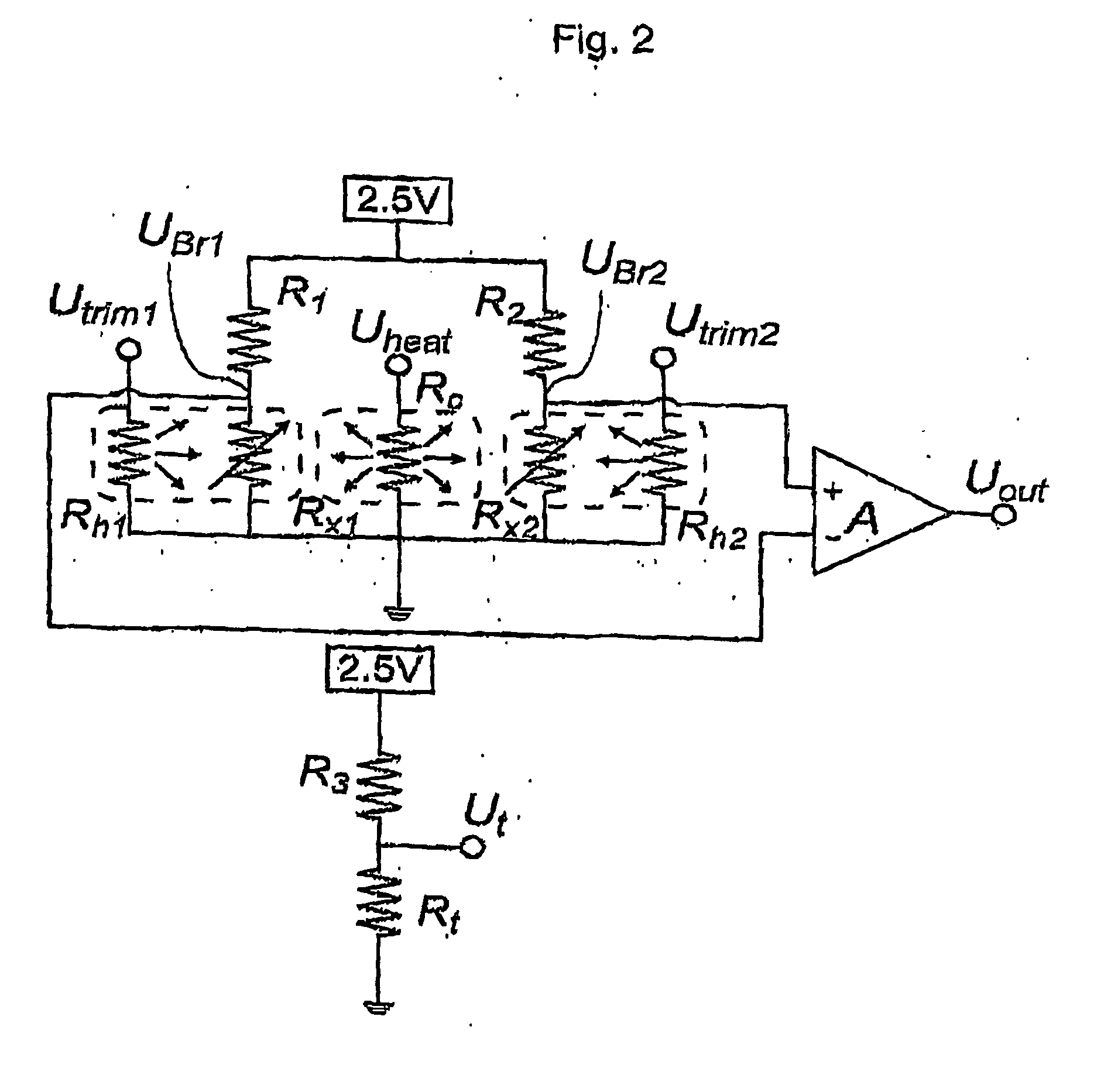Trimming temperature coefficients of electronic components and circuits
a technology of temperature coefficient and electronic component, applied in the field of adjusting the temperature coefficient of electronic circuit components, can solve the problems of circuits liable to lose their calibration, tcr changes in a less-easily-measured manner, and fine adjustment of resistance, and achieve the effect of high precision
- Summary
- Abstract
- Description
- Claims
- Application Information
AI Technical Summary
Benefits of technology
Problems solved by technology
Method used
Image
Examples
Embodiment Construction
[0041] While the prior art demonstrates that the TCR changes when one trims the resistance, it does not show how to trim the TCR while maintaining a constant resistance value.
[0042] This approach to trim the TCR of thermally-mutable materials such as polysilicon is based on certain experimentally observed phenomena, involving a hysteresis-like phenomenon, outlined below.
[0043] It should be noted that for the purpose of this disclosure, trimming is to be understood as increasing or decreasing the room-temperature value of an electrical component such as a resistor. It should also be noted that thermally-isolated is meant to describe an element that is isolated from other elements such that the heat flux (proportional to temperature differential) generated between the element and other elements, is generally low. Electrically-isolated is meant to describe an element that is isolated from other elements such that the resistance between this element and other elements is very high (e....
PUM
| Property | Measurement | Unit |
|---|---|---|
| relative temperature coefficient of resistance | aaaaa | aaaaa |
| relative temperature coefficient of resistance | aaaaa | aaaaa |
| constant recovery voltage | aaaaa | aaaaa |
Abstract
Description
Claims
Application Information
 Login to View More
Login to View More - R&D
- Intellectual Property
- Life Sciences
- Materials
- Tech Scout
- Unparalleled Data Quality
- Higher Quality Content
- 60% Fewer Hallucinations
Browse by: Latest US Patents, China's latest patents, Technical Efficacy Thesaurus, Application Domain, Technology Topic, Popular Technical Reports.
© 2025 PatSnap. All rights reserved.Legal|Privacy policy|Modern Slavery Act Transparency Statement|Sitemap|About US| Contact US: help@patsnap.com



